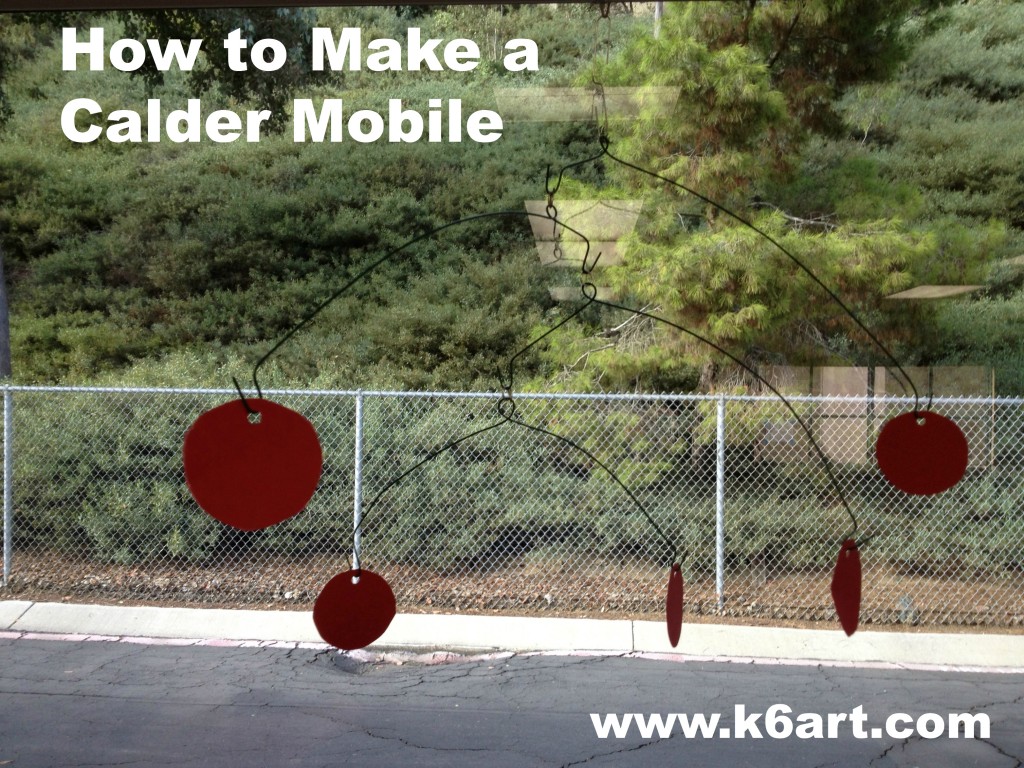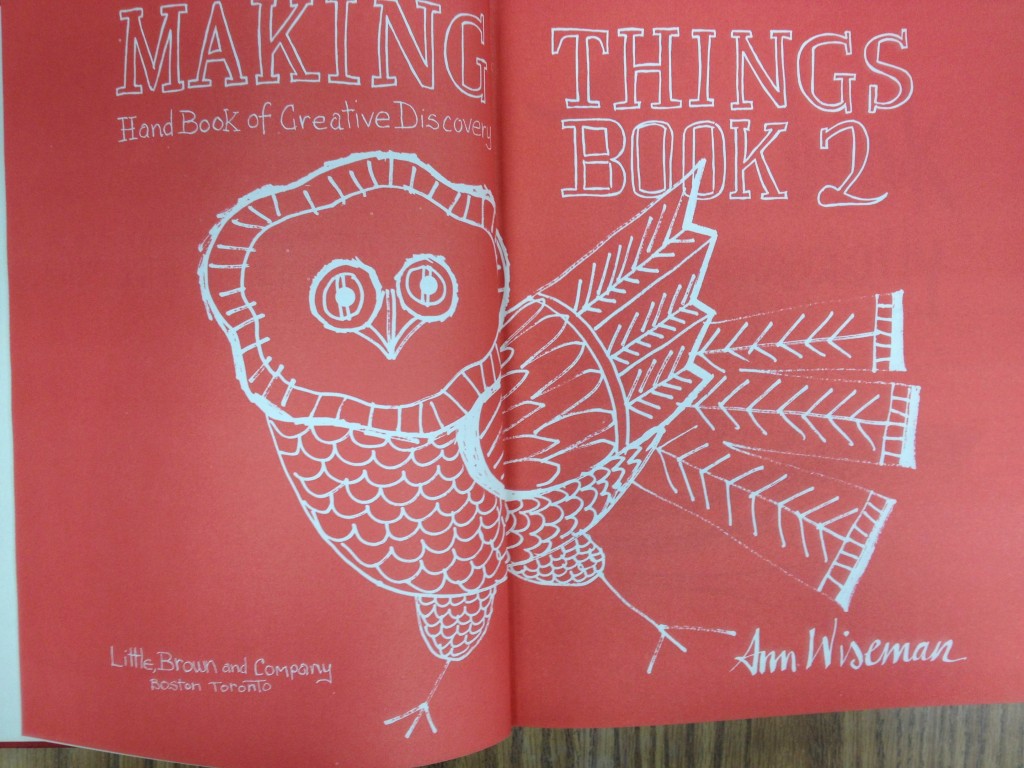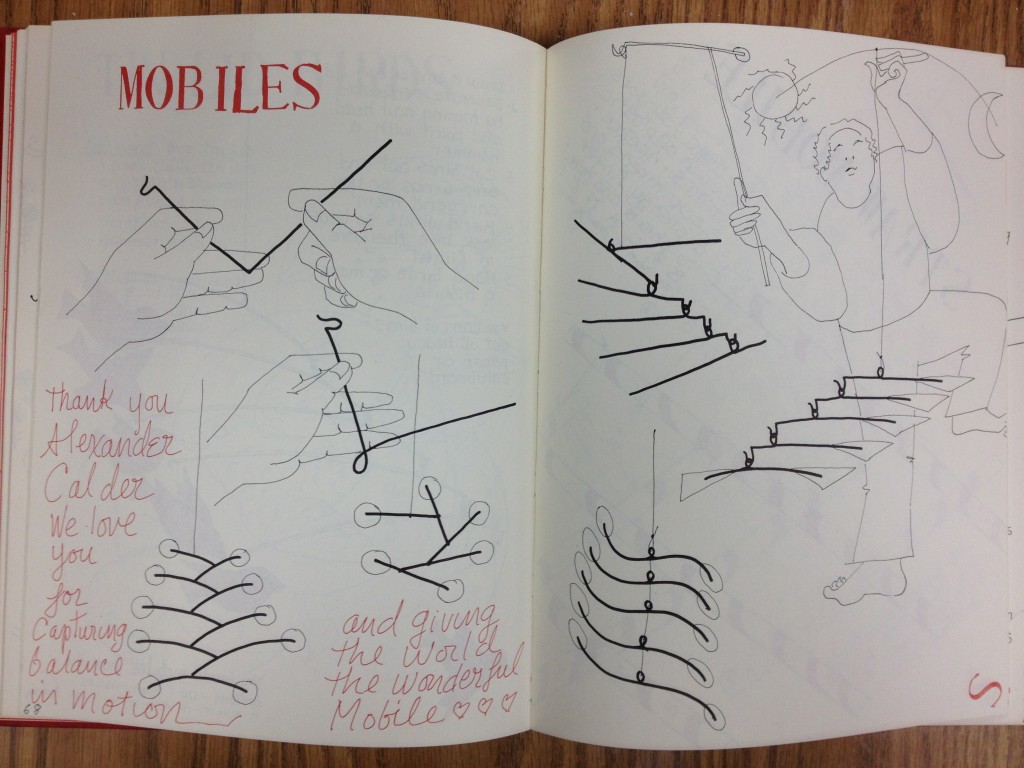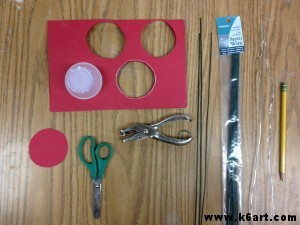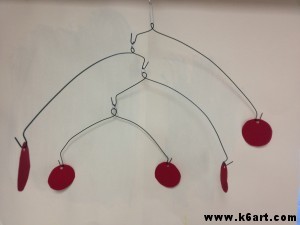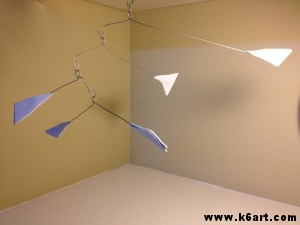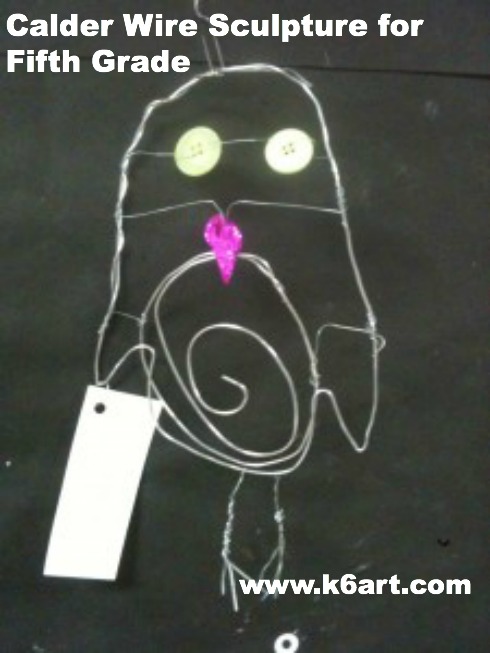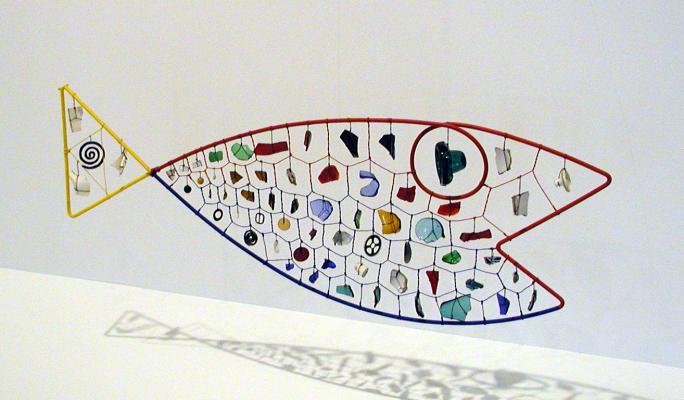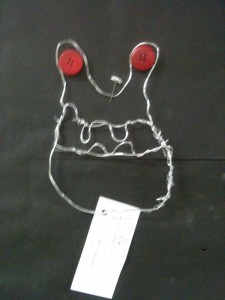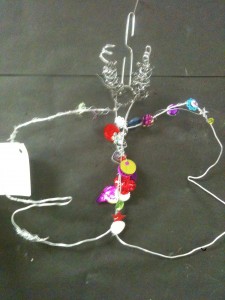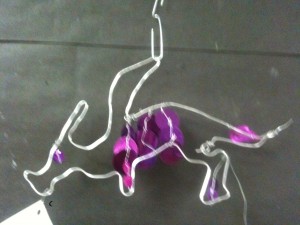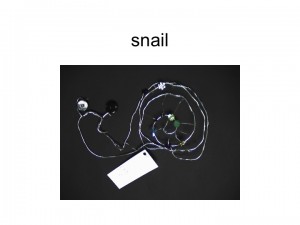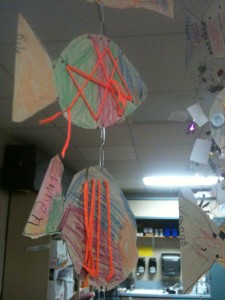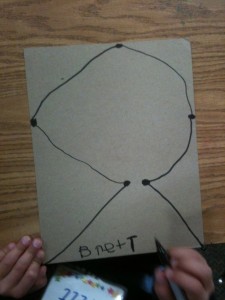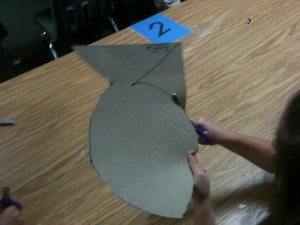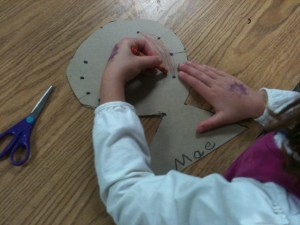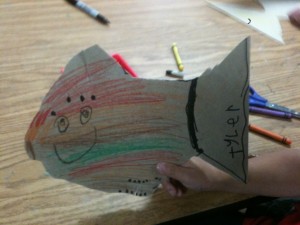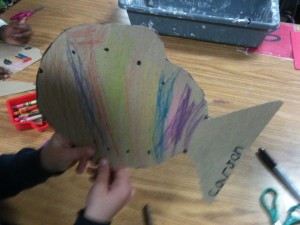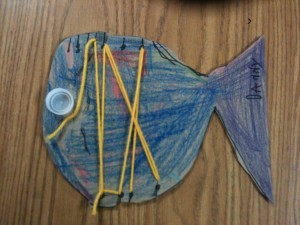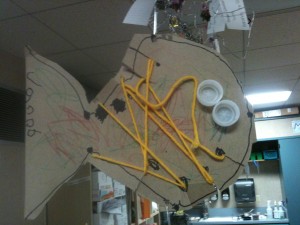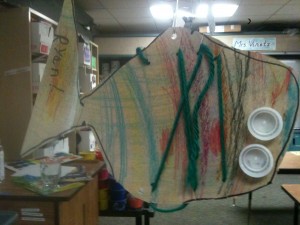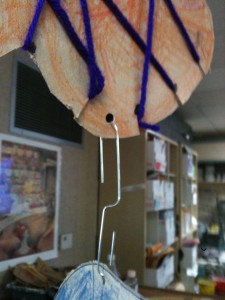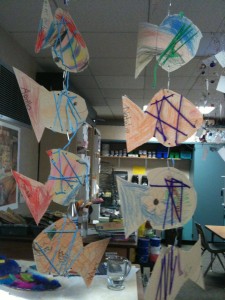I love Alexander Calder! I teach a Calder wire project each year, but I have never successfully made a Calder-inspired mobile. Until now!
I recently received this 1975 edition of Making Things: Book 2. The Handbook of Creative Discovery by Ann Wiseman. Inside this gloriously illustrated book I found these instructions for making Calder mobiles:
I decided to test it out with items I had on hand in the art room.
Materials for first mobile:
- 18-inch pre-cut Stem Wire (AKA floral wire) 20 gauge
- construction paper
- scissors
- hole punch
- pliers (note: I didn’t have any pliers so I just did this with my hands)
- AND A BALANCING FINGER 🙂
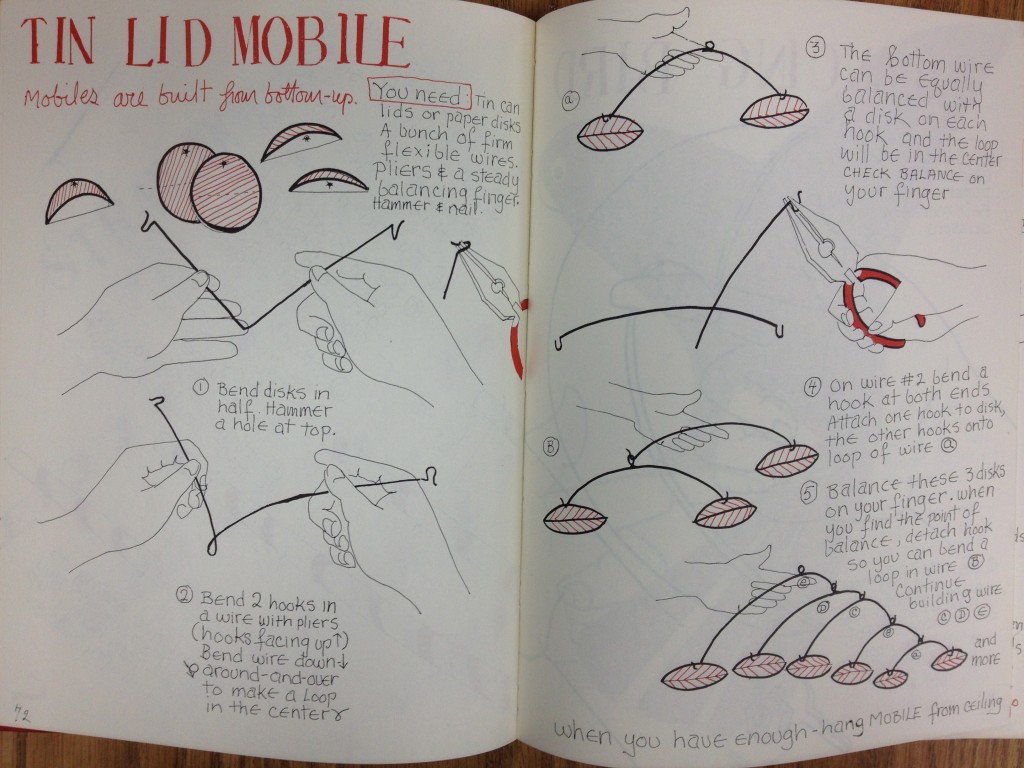
Ms. Wiseman tells us mobiles are built from the bottom up. Aha!
Now for my second mobile. I made this mobile using Ann Wiseman’s illustrations and Peel & Stick Foam Sheets.
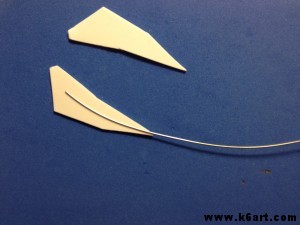
To add interesting organic shapes, sandwich wires between matching pieces of self-adhesive craft foam.
If you choose to make these multiple tier wire mobiles, try it yourself first, be patient, and expect a lot trial and error. Balancing those wires is tricky and takes practice. I think these projects would be great for middle and high school students.
If you want to try this with a whole class of upper elementary students, I would keep it simple. Stick with one or two wires. Check out this project from Meet the Masters. I like how they have three degrees of difficulty and incorporate a stabile as a base.
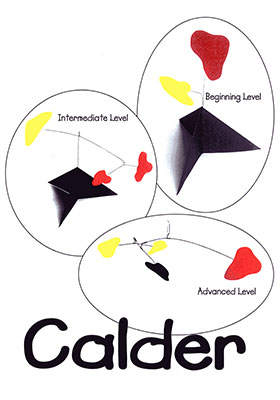
Illustration from Meet the Masters website.
Here are some more ideas for Calder mobiles for kids:
- Babble’s fun-foam and wire mobile. Beautiful! Great step-by-step instructions.
- The Princess Artypants blog has a great Calder kinetic sculpture project, including video links.
- Salamander Art has a super fun-foam hanging mobile project that ties in with children’s mystery The Calder Game
.
If you love Calder, you might like my previous Calder posts:
Enjoy!
Have you ever made a mobile with your students?
———————————————————————————-
Note: This post contains affiliate links.
Note: post updated 12/30/13

